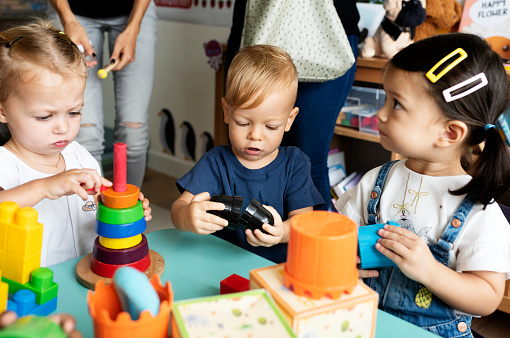There are several differences between daycare and preschool. Preschools aim to prepare children for kindergarten, so their curriculums are more structured. Each lesson is planned with a specific goal in mind. The preschools also keep track of their student’s progress and report it to parents. It will help parents know how their children are progressing.
Daycare is structured
A daycare is similar to a preschool in terms of its structure. The teachers adhere to a set curriculum and help the children to learn social skills. Typically, toddlers between the ages of three and five are accepted into these programs. Many of them require that children be potty trained before attending. They are organized into age-specific classes and operate during specific hours. Some are full-time, while others are part-time.
Both preschool and daycares offer structured programs, though a preschool is often more academically focused. Both are designed to help children prepare for kindergarten and offer various subjects. Both offer essential socialization opportunities and teach vital life skills. However, one of the main differences is the amount of freedom each offers.
Preschool is a valuable learning experience for children and can have long-term consequences on their health and well-being. A good preschool will give children a solid foundation to build on throughout their school years. In addition to focusing on the child’s developmental needs, preschools are also structured to help parents get work done.
Daycares are also similar to preschools but serve a broader age range. They may accept children as young as three years old, but many also offer after-school care for school-age children. Depending on the setting, they may even accept children as young as twelve.
Preschool is unstructured
Children learn through unstructured play, which is vital for the healthy development of the brain and body. Unstructured play fosters creative thinking and allows for exploring the world around them. The activities often involve peer interaction and play partners like siblings and parents. These interactions are crucial for building relationships.
This unstructured approach can foster social and cognitive development and help children become more socially adept. Children can develop their skills by talking with other children and mimicking their interactions. The Montessori approach promotes this approach and focuses on non-interventionist teaching. According to Montessori, children learn through trial and error.
Research indicates that children should spend two-thirds of their day engaged in unstructured play. It helps foster the development of creativity, which is essential for later academic success. Unstructured play also allows children to develop skills such as hand-eye coordination and balance. It is also helpful for developing leadership skills.
Potty training is required
Many programs will separate potty-trained children from non-potty-trained children. Others may group untrained children with non-potty-trained kids, and some might even refuse to accept untrained children. These policies are often based on sanitary and health concerns.
It’s important to remember that the potty training process is a collaborative effort involving all. While working together, parents and teachers can avoid child development mistakes. To keep your child motivated, communicate with caregivers and teachers throughout the process.
Potty training can be a challenging process, but it can be done. The key to success is consistency. If your child attends daycare or preschool, you must ensure that the staff is familiar with your child’s toilet habits. The childcare provider will likely have a standard toilet for the children.
Parents should pack spare clothing, plastic bags, and pull-ups for accidents to begin the process. Children should wear clothes that are not too tight or baggy. Daycare staff will help encourage your child to potty every half-hour. In addition to this, parents should prepare extra clothing, such as socks and underwear.
Structure
The structure of a preschool or daycare will vary depending on its focus. While daycares focus on establishing a safe and nurturing environment, preschools tend to focus more on academics and early childhood education. The same regulatory bodies regulate both types of daycares and preschools, but they have different objectives. You may check childcare services in South Morang to learn more about this.
The structure of a daycare or preschool should be designed to meet the needs of children and their parents. The space should have specialized features such as toilets and sinks sized for children, extensive plumbing and cabinetry, and plenty of windows.

